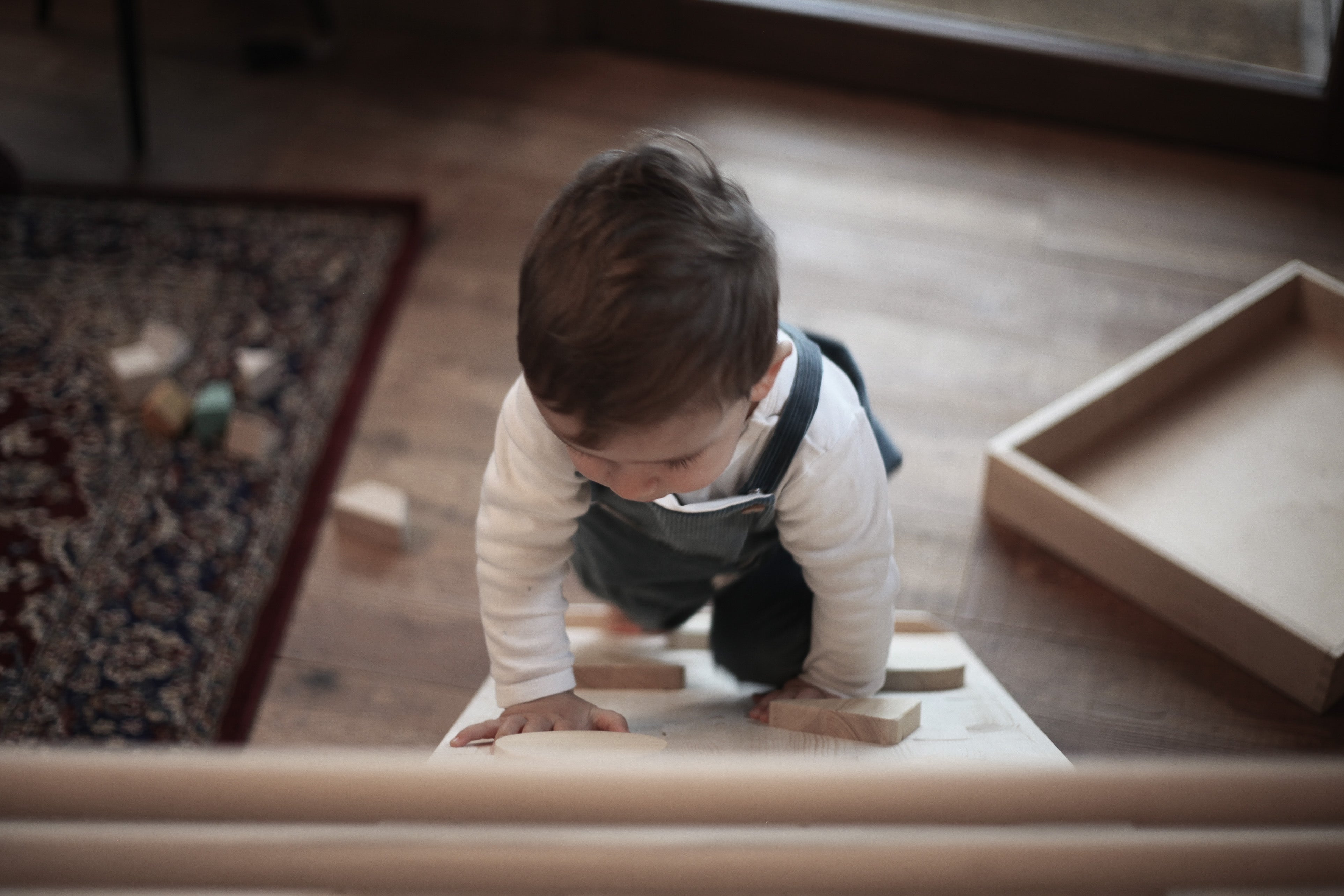Article: Playing is a serious matter

Playing is a serious matter
THE STAGES OF CHILDREN'S PLAY
Play is a very serious thing for a child.
For us adults, playing is a form of entertainment that we do through a specific activity that usually has a clearly identifiable beginning and end and which is carried out with the sole aim of having fun.
For the child, however, play represents the way in which he enters into a relationship with himself and with the world: by playing, the child develops knowledge, experiments and consolidates skills, builds his own identity, relates to others and to environment that surrounds him, processes situations, frees himself from tensions. In short, by playing, the child grows and trains to grow up.
And since play is closely connected with intellectual and psychological development, playing is an activity that changes over time as the child grows and, being "the most spontaneous habit of infantile thought" (J. Piaget), represents the tool primary to understand what is going on in his mind.
On the basis of the child's psychomotor development stages we can therefore distinguish as many "play stages".
Sensorimotor play (0-18 months)
This phase characterizes the first year of the child's life, a period in which knowledge of the world, and therefore also play, pass through bodily sensations and the very strong mediation of the adult who takes care of him: being in his mother's arms, lying with her on the carpet or playing on the bed, the child slowly learns new possibilities of movement and vocal expression starting from what he observes in the adult.
The games that the child prefers and which are suitable for this phase are all those that involve his own body and stimulate sensoriality and control over movements: the manipulation of objects of different consistencies and shapes, exploration through the mouth, observation of moving objects, repetition of certain patterns (e.g. game of peek-a-boo).
An essential activity in the first months is the baby's massage: the cuddle, combined with the sound of mum's (or dad's!) voice and continuous eye contact, not only stimulates the baby's senses or relaxes him, but helps to encourage the development of a an even deeper and more conscious bond between the child and the reference adult.
Pretend play (1-2 years)
After the first year of life, the child begins to use objects more appropriately, no longer just to explore them but to "do something". The purpose with which they are usually used is their real purpose, whose action the child simulates: for example, he takes a spoon to pretend to eat, a brush to pretend to comb his hair.
He also begins to better master concepts such as object permanence (i.e. the fact that objects do not disappear just because he no longer sees them) and cause-effect relationships, which is why he finds games such as filling and emptying containers, opening and close drawers, turn lights on and off, group objects based on shape/color/size.
At this stage the child often plays alone, he is not yet able to coordinate with other children for shared play. He can appreciate the closeness of his peers, carefully observing the play of others and being stimulated by it, but his play still remains "in parallel".
Symbolic play (3-5 years)
Between 2 and 3 years old, children begin to use their imagination to use objects with a function different from their own: then the broom handle becomes a horse to ride, the banana becomes a telephone and the stick turns into a sword . Around this age the child also begins to be interested in playing with others in a cooperative way: in this way he is able to build more complex dynamics in which everyone plays a different role (mum and dad, teacher and classmates, doctor, ...) but they all follow the same plot. Through this type of play, the child can reconstruct moments of daily life that he has experienced and that perhaps he is not able to manage emotionally: by recreating and staging moments that are significant to him, he can relive his own experiences in a protected context (since it is playful ) and process situations and emotions better.
It therefore goes without saying that this type of play plays a key role in the child's development both from a cognitive point of view and from a social and emotional point of view.
Game with defined rules (from 6 years)
It represents the last stage of the game, the most advanced one. These games (football, volleyball, cards, board games, ...) have pre-established and explicit rules which cannot be modified at any time as they represent the very essence of the game (unlike what happens in fantasy games where the rules can be agreed continuously). Here the range of possible behaviors is therefore much narrower and those who are not able to respect the rules are excluded. Furthermore, while fantasy play is a type of cooperative game in which everyone moves in a coordinated way to build the scene, albeit each with their own role, games with rules are competitive: there is one goal to achieve and only one of the participants (maximum one team) will win. Through this type of game, the child can therefore test his abilities and verify the improvement of his skills with important implications also on his self-esteem.
The fundamental role that play plays in the development process of children is therefore clear, but deciding to stop for a moment and play, with your children or among peers, is also good for you in adulthood.
We live in an era in which our days are full of "I have to do" and "I have to go", in which there is little room for enthusiasm, fun, imagination. And then we should defend it tooth and nail, a space in which to play, in which to relax, in which to simply "be", without necessarily "doing".
Just for the sake of having fun... and recharging.
Sabrina Berardo - Psychologist, @unapsicologanellorto

